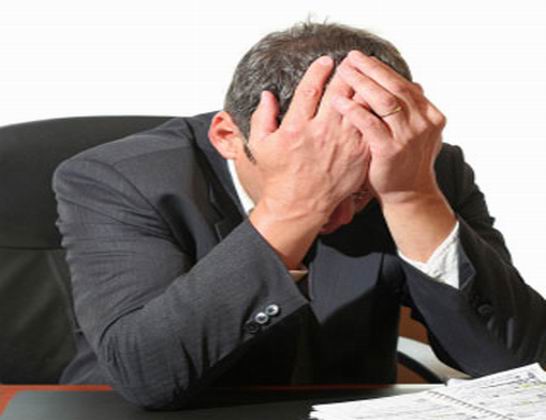Symptoms and causes of nervous breakdown and its percentage in the Arab world
on- 2015-09-09 11:12:25
- 0
- 4554

The nervous breakdown (neurasthenia) is one of the modern of diseases widespread. It is one of the most serious mental disorders and nearly 20% the population are infected by the disease .It appears in the daily actions and may continue for years until it appears in its complete form, scientifically it is called neurasthenic. The patient begins to feel exhaustion and constant fatigue and general weakness. The characterization of the disease was performed by the American scientist "Byrd". It is defined as neurological disorders and anxiety cases and disorders that affect the person and make him unable to do anything. The symptoms of nervous breakdown vary from one person to another.
The term nervous breakdown the is a non-medical term but it is common for some people and it generally refers to mental health problems such as anxiety and depression as a result of stress. Previously, they used to call it hallucinations but the term is no longer used now. This name was called as a result of weakness of nerves and the constant feeling of a person of that with no apparent reason and fatigue remains overwhelming for the person with the disease and would not go away. It starts with weakness at bedtime, and the symptoms of the disease spread in the old age and mid-age classes with a percentage of between 10 to 20% of the world's population.
The causes of nervous breakdown: it occurs as a result of stress such as tension and excess pressure on a person for a long time. For example, the person who is unemployed or in debt or anything of the concerns of daily life pressuring the person such as the loss of a dear person or the death of a person and other things.
Symptoms of nervous breakdown:
First, pouting and loss of happiness and the joys of life.
Second: Permanent anxiety and tension.
Third: Some psychological symptoms such as lack of concentration, lack of attention, sensitivity to the simple things, the slow pace of achievement, weak determination, not taking responsibilities and constant frustration.
Fourth: the continuous crying for no reason.
Fifth: giddiness and continuous dizziness.
Sixth: the continuous nausea and vomiting and loss of appetite.
Seventh: the inability to breathe and breathtaking acceleration.
Eighth: Weak heartbeat and rapid heartbeat.
Ninth: excessive sweating and the feeling of permanent chill.
Tenth: Permanent thinking disorders.
Eleventh: Suicidal thoughts.
Twelfth: pale skin, indigestion, sexual impotence, menstrual disorders, back pain, sleep disorders and fatigue when waking up and surrendering to sleep throughout the day.
Statistics of spread of the disease in the Arab world: a number of psychiatrists said that depression represents 20% of mental illness, while worrying represents 36% and sleep disorders represents 40% all that would constitute a nervous breakdown for which those represent the most important symptoms, so mental illness must constitute the largest area in awareness programs in light of increasing non-natural mental disorders that require therapeutic intervention such as neurasthenic which has the symptoms of depression, anxiety, mental disorders and sleep disorders.
There is no way to diagnose the disease specifically as it depends on the patient himself or suspecting some symptoms. The diagnosis is made by some symptoms like tension and excessive anxiety along with sleep disorders and psychiatric disorders and some physical disorders.
Therapy method: therapy requires change from the person himself who suffers from these disorders, changing lifestyle routine, starting practicing sports, especially jogging, getting away from the tension and nervousness, some doctors give sedatives for anxiety and some vitamins such as magnesium, calcium, phosphorus, vitamin B-12 with antidepressant medications. But the most important therapy is the change in lifestyle largely as means of helping the patient to get the maximum benefit.
